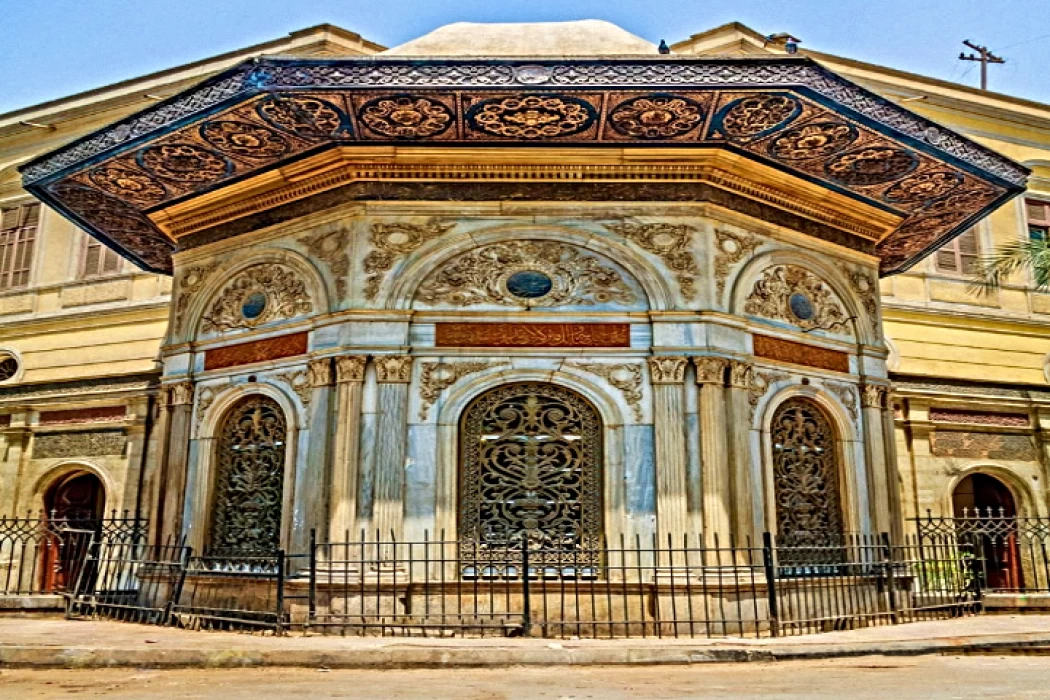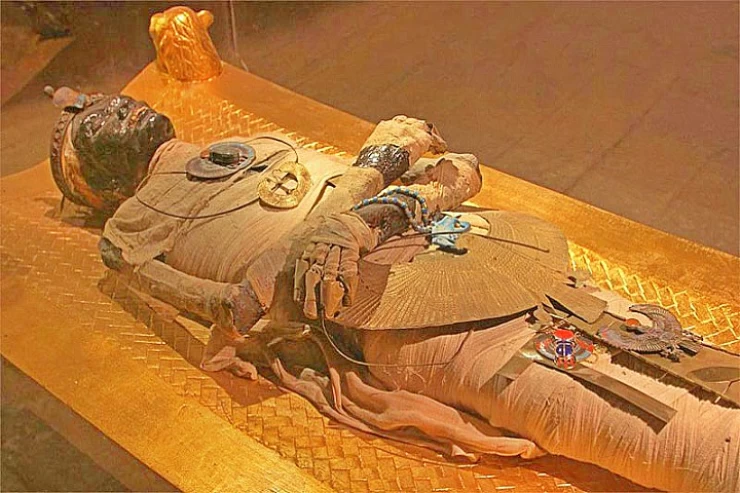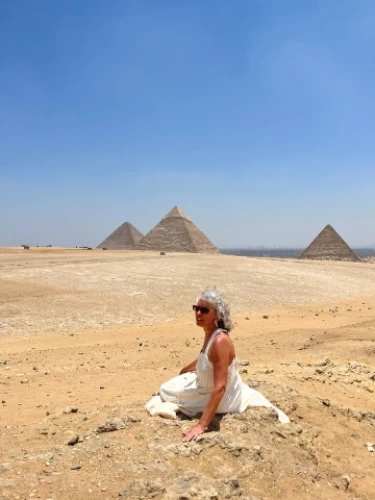
Sabil Umm Abbas
Sabil - Kutab Umm Abbas was established in 1284 AH corresponding to 1867 AD in Cairo. It was established by "Bamba Qaden" Umm Abbas Pasha and the wife of Prince Ahmed Toson Pasha.
Sabil - Kutab Umm Abbas is located at the intersection of Al Rakbeya Street, Al Sioufia Street, and Al Saliba Street, in the Citadel District in Cairo. The Sabil consists of two levels, the first level is underground, and there are tanks that were used to store water, and they were transported in a “leather bag” with water from the Nile to be free of impurities.
This stage used to take place in August of each year during the flood season, so that the impurities were less at this time, which is a room with three windows, and in this way, there is a marble slab called “Al-Shazrawan”, which is distinctive and of double benefit, the first is water cooling Drinking and purifying water from impurities, and the second was to clean this marble slab at the end of each day.
The Sabil was named by this name in sympathy for the soul of her son, and Princess Bamba Qaden insisted that the Sabil be called Umm Abbas, not by her name, in memory of her late deceased son Abbas Helmy I (1280-1296 AH / 1863-1879 AD), the governor of Egypt. Khedive Ismail Pasha's uncle.
It was dedicated to distributing pure drinking water scented with rose water, to passersby, seeking reward and invocation of supplication. It was like a public water fountain and there was a school above it. The Umm Abbas Sabil is one of the most impressive buildings on Saliba Street.
Decorate the architecture with marble floral designs, which are inspired by European Rococo designs. The Sabil is planned in the form of an octagon, and this layout is one of the rare examples in Cairo. It is covered by a splendid dome without a transition zone, and the facade is covered with marble and decorated in Baroque and Rococo styles.
Attached to the way was a "Kutab" or school to teach children the Holy Qur'an, mainly, teachers were appointed to teach children modern sciences, as in government schools during the era of Khedive Ismail.
It is distinguished by the presence of writings in Arabic and Turkish, the writing on the walls is immortalized in Arabic and Turkish, and one of the written tapes ends with the name of the calligrapher Abdullah Al-Zahdi Al-Nabulsi.
The Sabil is about to disappear from its archaeological features due to a large number of dust covering it and forming within its engravings, and its wooden sign has been damaged and may fall due to rusting nails, and the iron fence that surrounds the monument, its walls filled with posters that concealed some cracks, and on one of its walls there is a clock whose hands and numbers have fallen from Lots of dust.
Latest Articles
Admin
Seabourn Sojourn Cruise Stops in Safaga Port
The Seabourn Sojourn, the flagship vessel of Seabourn Cruise Line's ultra-luxury fleet, was built in 2008 at the T. Mariotti shipyard in Genoa, Italy. Measuring 198 metres, it can accommodate up to 450 guests in its 225 spacious all-suite staterooms.
Admin
Norwegian Sky Cruise Stops in Safaga Port
Norwegian Cruise Line operates a cruise ship called the Norwegian Sky. It was constructed in 1999 and can accommodate 2,004 passengers in addition to 878 crew members. The ship has several dining establishments, lounges and bars, a spa and fitness center, swimming pools, and a number of entertainment areas.
Admin
Explora II Cruise Stops in Safaga Port
Explora II, the second vessel in the Explora Journeys fleet, sets sail in 2024 to redefine luxury cruising. With 461 ocean-front suites, 9 culinary experiences, and 4 pools, this haven of sophistication and sustainability promises an unforgettable "Ocean State of Mind" journey to inspiring destinations.
Admin
Mein Schiff 6 Cruise Stops in Safaga Port
The Mein Schiff 6 is the latest cruise ship in the renowned TUI Cruises fleet, offering passengers a luxurious and sophisticated cruise experience. At 315 metres long, this floating resort features a range of dining options, entertainment, and recreational facilities, including a spa, fitness centre, and sports amenities.
Admin
Mein Schiff 4 Cruise Stops in Safaga Port
When the Mein Schiff 4 cruise ship docks in Safaga, Egypt, passengers are granted access to a realm of ancient wonders. Aboard this state-of-the-art vessel, guests can embark on meticulously curated shore excursions that showcase the region's most iconic landmarks, including the Giza Pyramids, the enigmatic Sphinx, and the remarkable tombs and temples of the Valley of the Kings in Luxor.
Admin
MS Europa Cruise Stops in Safaga Port
The Silver Moon, Silversea's latest flagship, is a luxury cruise ship that offers an exceptional travel experience for Venezuelans exploring Egypt. With a capacity of 596 guests and an impressive 40,700 gross tonnes, the Silver Moon maintains the small-ship intimacy and spacious all-suite accommodations that are the hallmarks of the Silversea brand.
















